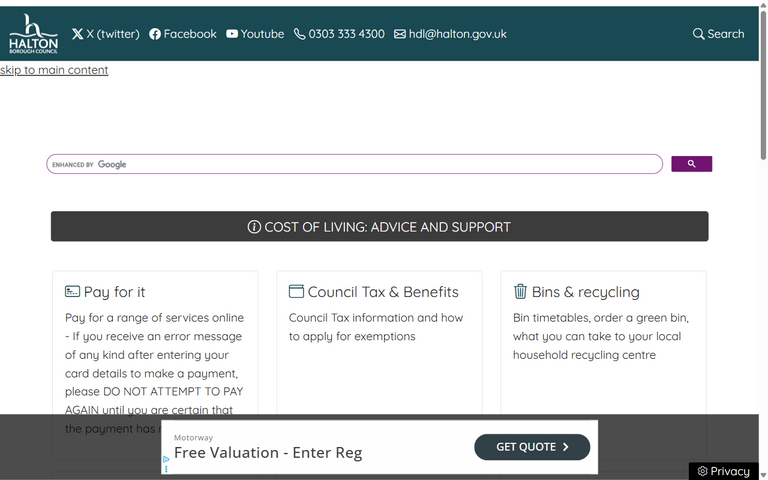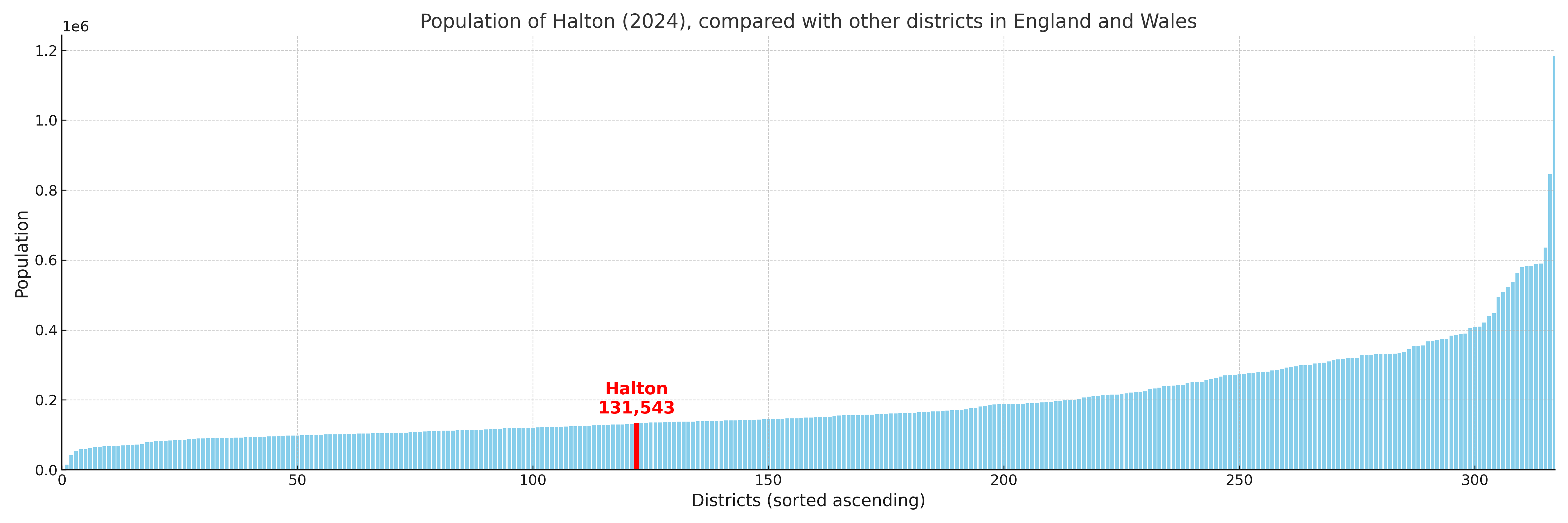Halton
§ This page gives an overview of the Halton local authority district, bringing together key facts, maps, and data to help you quickly understand the area. One of 361 district profiles on Baseview.
Overview ⁞ Halton lies on the River Mersey, centred on the towns of Runcorn and Widnes, linked by bridges including the Silver Jubilee Bridge and the modern Mersey Gateway. The area has a mix of industrial heritage and green landscapes, with Runcorn Hill Park, Spike Island, and the Sankey Canal providing natural retreats. Views across the estuary and access to waterways define its geography, while surrounding villages and suburban communities add local character.
Halton Boundary Map
This map shows the official boundary of the Halton local authority district, based on the latest geographic data published by the Office for National Statistics (ONS). It provides a clear view of the district’s extent and helps you understand how the area fits within the wider regional and national landscape.
Contains OS data © Crown copyright and database right 2025. Source: Office for National Statistics licensed under the Open Government Licence v3.0.
The administrative boundary of Halton can also be viewed on OpenStreetMap: District Boundary of Halton.
Key Facts about Halton
What region is Halton in? Halton is in the North West of England, a region within the UK.
What county is Halton in? Halton is in the county of Cheshire.
Is Halton a city? No, Halton is not a city. (Note: the UK has 76 officially designated cities.)
Who governs Halton? The local government for this district is: Halton Borough Council (Unitary Authority).
▶ Official website of Halton Borough Council 🔗 halton.gov.uk

Which police force covers Halton? Policing in Halton is provided by Cheshire Constabulary 🔗 cheshire.police.uk, which serves 4 local authority districts: Cheshire East ⁞ Cheshire West and Chester ⁞ Halton ⁞ Warrington.
Constituencies in Halton
Halton is divided into 2 parliamentary constituencies, listed below in alphabetical order.
A constituency is a specific geographical area that elects one Member of Parliament (MP) to represent them in the House of Commons. The United Kingdom is divided into 650 parliamentary constituencies. We have this list page for easy browsing of all UK parliamentary constituencies: List of Constituencies.
Wards in Halton
Halton is divided into 18 wards, listed below in alphabetical order.
- Appleton
- Bankfield
- Beechwood & Heath
- Birchfield
- Bridgewater
- Central & West Bank
- Daresbury, Moore & Sandymoor
- Ditton, Hale Village & Halebank
- Farnworth
- Grange
- Halton Castle
- Halton Lea
- Halton View
- Highfield
- Hough Green
- Mersey & Weston
- Norton North
- Norton South & Preston Brook
In the UK, a ward is a subdivision of a local authority area, used mainly for electoral and statistical purposes. Defined by the ONS, wards represent the primary unit for local elections, each returning one or more councillors to the local council. Wards are also used as a key geography for presenting population and census data.
Parishes in Halton
Halton is part-parished: 6 civil parishes (listed A-Z below) alongside 3 unparished areas.
- Daresbury
- Hale
- Halebank
- Moore
- Preston Brook
- Sandymoor
A civil parish is the lowest tier of local government in England, used for villages, small towns, and suburbs. They have their own local authority, either a parish council or a parish meeting, which provides local services like managing parks, allotments, and streetlights, and represents the community's views to larger councils.
Built-up Areas in Halton
Halton covers 7 built-up areas, listed below in alphabetical order.
- Daresbury
- Hale (Halton)
- Hale Bank
- Liverpool *
- Moore *
- Runcorn *
- Widnes *
In the UK, a Built-up Area (BUA) is a continuous urban area of at least 20 hectares (0.2 km²), defined by the ONS as land where buildings are generally no more than 200 metres apart, such as towns, cities, or large villages. (Note: A BUA name marked with an asterisk (*) indicates that the area is situated partly in the district of Halton.)
Halton compared with other districts in the UK
This section shows how Halton compares with other local authority districts in the UK, using a variety of measures and rankings.
Halton has 18 electoral wards.

Halton has a population of 131,543 (2024 mid-year estimate by ONS)

More local statistics and data for Halton can be found on the ONS statistics for Halton.